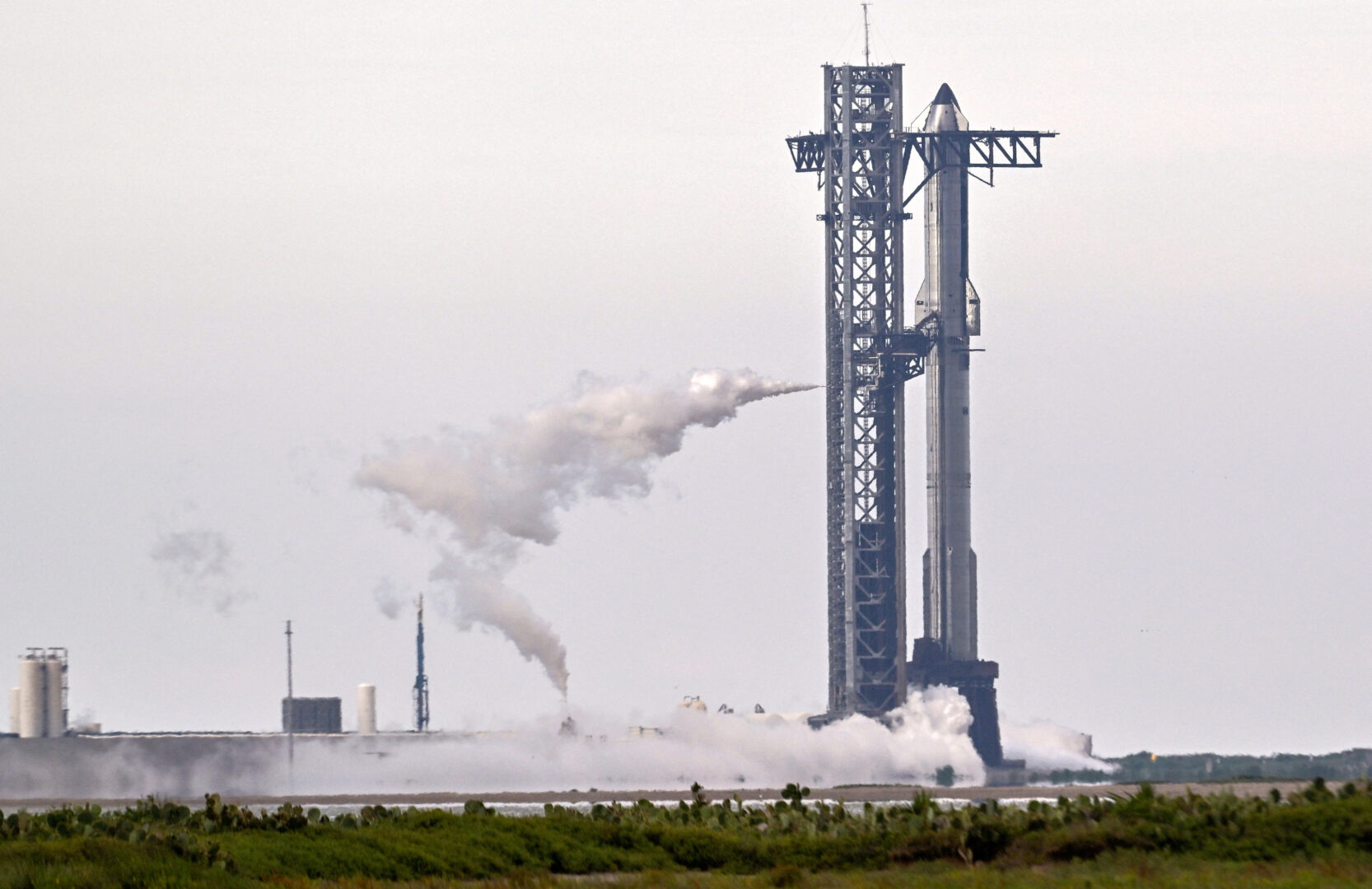SpaceX Delays Tenth Starship Launch Due to Technical Issue
SpaceX postponed the launch of its tenth Starship test flight on Sunday, citing a technical issue at the launch site in Texas. The mission was expected to mark a significant step in the rocket’s development, which has faced numerous challenges in past attempts.

Launch Halted Shortly Before Liftoff
The fully stacked Starship, consisting of a 232-foot Super Heavy booster and a 171-foot Starship upper stage, stood on the launch mount at SpaceX’s Starbase facility. The team had begun filling it with fuel ahead of the planned launch at 7:35 p.m. ET (2335 GMT).
However, about 30 minutes before liftoff, SpaceX announced on X that the launch would be delayed. The pause allows engineers to investigate an issue with the ground support systems.
Elon Musk had planned to give an update on Starship’s progress before the launch, but the live stream was cancelled.
Past delays like this have typically been resolved within days. According to the company’s website, the next attempt may happen as soon as Monday, August 25.
Technical Setbacks Challenge Development
Starship is central to SpaceX’s future ambitions, including its plans to transport humans to Mars. However, the rocket’s development has not been smooth in 2025.
This year alone, the programme has seen several early-stage failures, a malfunction in space during its ninth mission, and a significant explosion in June. That explosion even scattered debris into parts of Mexico. These incidents highlight the risks of SpaceX’s test-to-failure approach.
Despite these issues, the company has kept up a steady pace of production at its Starbase site. NASA is also watching closely, with hopes to use Starship for a crewed moon landing by 2027.
Upcoming Mission Designed to Push Limits
The tenth mission had been set to lift off near sunset. In this flight, the Super Heavy booster was to aim for a controlled splashdown in the Gulf of Mexico. Unlike previous attempts, it would have tested a backup engine system during the descent.
After separation from the booster, the Starship upper stage was to fire its engines again to climb further into space. It planned to release mock Starlink satellites and reignite an engine during a suborbital journey.
A key part of the test involved Starship’s reentry over the Indian Ocean. This would have tested heat shield tiles and flaps built to handle the intense heat of atmospheric return. These features are critical for future reuse of the rocket.
SpaceX said the reentry profile is meant to push the structural strength of the rocket’s rear flaps to their limits during maximum pressure.
with inputs from Reuters


